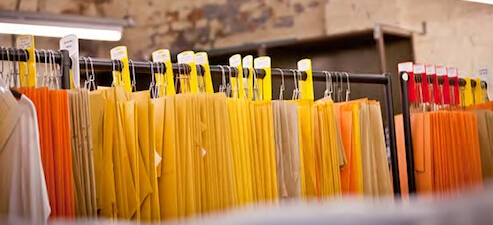Number this year to participate in China International Textile Machinery Exhibition ITMA Asia British textile machinery companies than ever before. Alan Little on their situation to make a reply.

Then there will be many British textile machinery companies to participate in China International Textile Machinery Exhibition ITMA Asia it? The British company will have 19 exhibitors, over 2012 and 2010 to add one. The company’s business scope covers the entire industry from spinning to finishing and other fields, but always focus on Britain’s most powerful detection. How Britain’s textile machinery company’s performance in 2013? 2014 so far, the situation for them, and how?
Compared with 2012, in 2013 the British textile machinery exports increased by nearly 34%. This growth is mainly reflected in the Asian market, especially in China. Increase compared with the 2012 China market reached 183% higher sales amount close to 45 million pounds, with 2008 sales before the world economic recession fairly. For members of the Association, the Chinese market two years ago to hold the China International Textile Machinery Exhibition ITMA Asia compared to the situation then?
Two years ago, due to the decrease in sales in 2008 and 2009 appeared, our member companies showed cautious optimism. However, the 2010 sales of China in 2009, compared with an increase of more than 60%, the amount of nearly 10 million pounds. Therefore cf this case, and now sales grew four percent, this is a gratifying result.
From the British textile technology perspective, what are the main demands of the textile companies in Asia?
After decades when asked Britain has now become a major player in the textile industry, new technology research and development. Accordingly, machinery manufacturers for their expertise in research and development to improve production that not only meet strict criteria multinational corporations, but also to meet the customers continue to use, requiring efficient operation, to provide comprehensive after-sales service and technology support machinery and equipment. These precisely the Asian textile company in order to maintain its market competitiveness of the key requirements.
British Textile Machinery Association will participate in the Asian textile machinery exhibition which activities it?
British Textile Machinery Association will assist these UK companies to achieve their goals, providing a potential buyer for meetings with the region’s platform for them. British Textile Machinery Association pavilion located in the center of the work of the service operators asked to provide internal conference facilities, so that you can communicate face to face with potential buyers in a quiet relaxed atmosphere.
Do you think the British textile machinery manufacturers who, what are the major Asian emerging market?
China will always and India, Pakistan, Bangladesh and Sri Lanka, as representatives of the major markets of the UK textile machinery. However, all indications such as Japan, Korea, Vietnam and Thailand and other countries are now also increasingly active, so the British company will also give due consideration to the sales for these markets. Currently, the vitality of the British textile machinery company in the overseas market is growing. Ongoing R & D investment and new manufacturing processes, led them to grow sales in many markets around the world, this trend will continue.